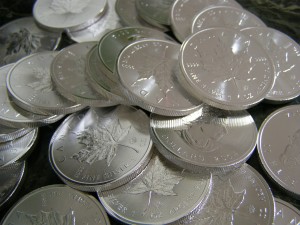Lower precious metals prices on Wall Street aren’t necessarily bringing lower prices on Main Street.
![]() Bullion.Directory precious metals analysis 10 August, 2015
Bullion.Directory precious metals analysis 10 August, 2015
By Clint Siegner
Director of Money Metals Exchange
The retail market for gold and silver coins, bars, and rounds has been swamped with high demand since mid June. Both the U.S. Mint and the Royal Canadian Mint continue to run into serious issues keeping up with retail silver coin demand.
 After selling out in early August, the U.S. Mint resumed deliveries of Silver American Eagles, but it has since been rationing them out. And this week brings word of new silver supply-chain problems. Mint officials let it be known they are cutting further back on Silver Eagle shipments, reducing them as much as 20% below already insufficient levels.
After selling out in early August, the U.S. Mint resumed deliveries of Silver American Eagles, but it has since been rationing them out. And this week brings word of new silver supply-chain problems. Mint officials let it be known they are cutting further back on Silver Eagle shipments, reducing them as much as 20% below already insufficient levels.
Dealers already had some catching up to do, and similar news from the Royal Canadian Mint (RCM) late last week won’t help either.
RCM officials announced significant “problems” with sourcing silver blanks for production of the Silver Maple Leaf. At least one major wholesaler stopped accepting new orders for the popular coin all together.
The one-two punch of U.S. Mint and RCM rationing and production breakdowns promises to keep buy premiums elevated and cause shipping delays on most government-minted silver coins for the foreseeable future.
Are Delivery Delays and Higher Premiums Reasonable?
Bullion investors watched spot prices fall relentlessly during the month of July and a whole lot of them decided to go bargain hunting. Unfortunately, when they called their dealer to buy silver, they found significantly higher premiums and delivery delays on most items.
Seizing the opportunity to buy silver on the cheap when spot prices fell below $15 per ounce has proven harder than many expected.
Inventory constraints in the marketplace SO FAR are primarily a function of bottlenecks in manufacturing of certain products – not an outright shortage of raw silver grain or bars.
Reputable dealers like Money Metals Exchange will only accept orders for precious metals that it already owns and for products it knows it can fulfill. Responsible dealers make commitments to customers up front about when a customer should receive delivery, and then meet (or exceed) those commitments. And, as frustrating as it might be to do so, prudent dealers will stop selling items that cannot be reliably sourced.
Unfortunately, some dealers operate differently – taking all the orders they can regardless and hoping and praying they can follow through as promised. That’s risky for both the dealer and the customer.
If your dealer is consistently missing commitments on delivery, or quoting delays significantly longer than other dealers, you should be wondering if the company truly is “selling silver they don’t have.” Shipment in one to two weeks after payment clearing is reasonable given current bottleneck conditions. Anything approaching a multi-month delay at this point should be viewed as unacceptable.
Demand during Price Drops Tends to Force Premiums Up
The physical market for precious metals, unlike the paper futures markets for gold and silver, DOES respond to real-world supply and demand fundamentals. This market is also extraordinarily competitive. Premiums have to be set at fair levels or customers go elsewhere.
One misconception is that higher premiums go straight into the dealers’ pockets. In reality, the wholesale premiums and fabrication costs associated with securing inventory are also rising.
Dealers aggressively bid for scarce inventory and production capacity so their customers can access the supply they want.
In recent weeks, for example, Money Metals Exchange has actively encouraged customers to buy silver rounds, where premiums rose only modestly, and silver bars, where premiums increased only a few cents.
Bargain hunting for bullion investors is best done when the physical markets are quiet and premiums coming down.
This article was originally published here












 Material provided on the Bullion.Directory website is strictly for informational purposes only. The content is developed from sources believed to be providing accurate information. No information on this website is intended as investment, tax or legal advice and must not be relied upon as such. Please consult legal or tax professionals for specific information regarding your individual situation. Precious metals carry risk and investors requiring advice should always consult a properly qualified advisor. Bullion.Directory, it's staff or affiliates do not accept any liability for loss, damages, or loss of profit resulting from readers investment decisions.
Material provided on the Bullion.Directory website is strictly for informational purposes only. The content is developed from sources believed to be providing accurate information. No information on this website is intended as investment, tax or legal advice and must not be relied upon as such. Please consult legal or tax professionals for specific information regarding your individual situation. Precious metals carry risk and investors requiring advice should always consult a properly qualified advisor. Bullion.Directory, it's staff or affiliates do not accept any liability for loss, damages, or loss of profit resulting from readers investment decisions.

Leave a Reply